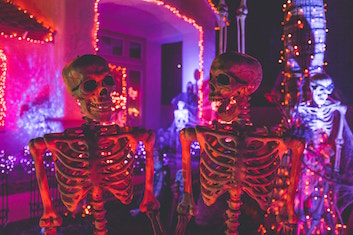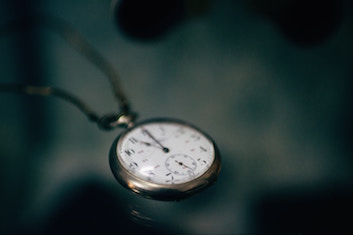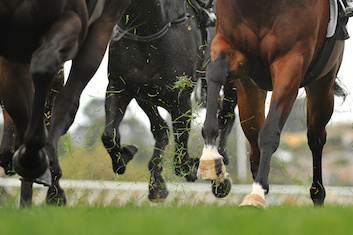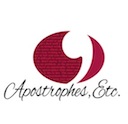Apostrophes and contractions
Part of the reason that people find apostrophes confusing is that we use them in two different ways:
- to show possession (or, as I prefer to say, close association) between two things
- to show where letters have been left out of word or where it has been contracted (sometimes the contracted word will be run on to another word)
Apostrophes that show contractions can be found at the beginning, in the middle or at the end of words. If at the end of a word, they will not be followed by an s.
There are just five groups of contractions and, unlike the possessive apostrophe, which can be used with a limitless number of words, the first four groups are very small. The final group is larger, but still smaller than the possible number of words that can take a possessive apostrophe.
1 Contracted nouns
There is a small group of nouns (words that are the names of things) that are contractions: e’en (a contraction of even, an old-fashioned word for evening); fo’c’sle (a contraction of forecastle, a part of a ship); Hallowe’en (the same contraction as e’en – it means the day before All Hallows Day).

In speech, we often run personal pronouns and the verb to be together.
With the other personal pronouns, we drop the first letter of the verb. I am becomes I’m; you are becomes you’re; he is and she is become he’s and she’s; we are becomes we’re and they are becomes they’re.
2 Contracted prepositions
There are two prepositions (the little words that make a relationship in time or space between two things): o’ for of, used in expressions such as will-o’-the-wisp or cat-o’-nine-tails and most commonly in o’clock (of the clock); and o’er, for over (used very rarely in poetry).

3 Contracted negatives
There is a small group of verbs made negative with the contraction n’t (for not) run on to them: ain’t (a version of am not), aren’t, isn’t, wasn’t, weren’t, can’t, couldn’t, won’t, wouldn’t, shan’t, shouldn’t, mustn’t, mightn’t, haven’t, hasn’t, hadn’t, don’t, doesn’t, didn’t and some others.Note: it is considered poor expression to use these words in written English, unless you are writing dialogue.
![]()
4 Contractions of verbs in (and from) speech
There is another small group of words where a contracted form of a verb – usually the verbs to be, to have and conditionals: am, is, are, had, has, have, will or would – is run on to another word, usually a personal pronoun. I don’t have room to give the full set here but some examples are I’m, she’s, they’re, why’d, how’s, we’ve, where’ll, what’d. There are a few combinations where two of these contractions are used: for example, I’d’ve (meaning I would have).
With the pronoun it, we drop the i from it in the expressions It is, It was and (rarely) it were, rather than dropping letters from the verb. For example, two children arguing: ’Tis! ’Tisn’t! ’Tis! ’Tisn’t! More literary examples are the start of Lewis Carroll’s poem ‘Jabberwocky’: ‘’Twas brillig and the slithy toves . . .’ and Shakespeare’s Macbeth: ‘If it were done when ’tis done, then ’twere well
Note: these expressions are used mostly in spoken English; it is considered poor writing to use them in written work, unless you are writing dialogue.

5 Contractions to show accents
When writers create dialogue, there is a large group of words where apostrophes are used to show where someone with a particular accent doesn’t pronounce a letter or letters, usually h or th at the start of a word and g at the end of word. For example, I heard ’er sayin’ it or I saw ’em goin’. Or It ain’t the ’untin’ on the ’ills that ’urts the ’orse’s ’oof/ It’s the ’ammer, ’ammer ’ammer on the ’ard, ’igh road.

And those are all the instances where apostrophes are used for contractions! The one tricky point with contractions is knowing the difference between its (possessive) and it’s (contraction of it is or it was), and similarly your and you’re, their and they’re. (I have discussed this problem in an earlier post.)

If you have found this post interesting, you can find a full index to my other posts on the index page. To be notified when I post a new topic, follow me on Facebook! If you have any particular questions you’d like me to answer in future posts, just send me a message. I’m always interested to learn what people think, and how you came across this site, so please post a comment.
If you think you would be interested in either my complete grammar course or an individual customised online course (particularly suited for people who don’t live in Melbourne), just click your preferred option.